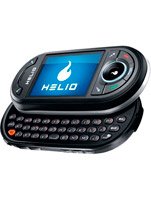Marketing 2.1: Partnerships, Branding & Convergence
How fashion brands can position themselves in a rapidly changing new media world
There will be more than 4,000 companies showing among the crowded fashion tradeshow scene in Las Vegas this season, making it more important than ever for brands to find a way to break through the considerable clutter.
These days, the consumer—or end user— has more power and more options than ever, thanks to the Internet, blogs, iPods, mobile technology and other personal digital devices. Consumers want what they want, and they want it now, typically online or on a wireless device. It is much more difficult to launch and develop a brand than it was 20, 10 or even two years ago. To be successful today, companies need to embrace all aspects of culture and embrace a multi- channel brand-marketing approach. To do so, a brand needs to create, build and retain its own consumer communities online—and off.
Before launching, companies should take into account several factors that can help give a brand a measurable—and secure—boost in the marketplace.
Look beyond the industry
Large companies all over the business spectrum have warmed up to partnering with fashion brands as a viable business means of entry into the fashion world’s unique alchemy. The success of fashion-themed shows, such as Bravo’s “Project Runway,” has helped fashion enter the cultural zeitgeist. Young men and women who used to start indie bands are now starting indie fashion labels. Apparel companies looking to tap into that widespread appeal can significantly raise the value and awareness of their brands by striking key partnerships outside of the traditional fashion channels. Convergence and cross-pollination with the music and mobile industries is an ideal starting point.
The timing is right for striking partnerships with music labels and telecom companies, thanks to a sluggish music industry and a highly competitive mobile-services industry searching for any ounce of differentiation.
Fashion brands are more trend-aware than any other business, making them attractive to the right partner. A corporation can also pick a partner based on a specific fashion category in order to hit the desired demographic. An emerging brand—and emerging band—can sometimes be the best play here. By pairing an emerging brand with an emerging band, both grow together at the rate of the most popular. As one grows in popularity, so does the other (a great cost-effective marketing ploy). Likewise, most large brands today are eager to tap into the elusive, cutting-edge creative community in order to beef up their artist cred.
“Music and fashion have always been primary components to particular lifestyles,” said music consultant Rodel Delfin, A&R editor of Hits magazine and co-founder of the Amplify Music Conference and Festival in Las Vegas. “Brands that have identified synergies and have cross-marketed together have greatly benefited from it, not just in sales but by shaping popular culture.”
Delfin cites Santa Fe Springs, Calif.–based Vans shoes as an example of a company that struck smart partnerships that complement and enhance its marketing message.
“They have maintained their presence over the decades because they stayed true by marketing to their primary core audience—from sponsoring skateboard and surf events [and] competitions back in the ’70s and ’80s to sponsoring [and] owning a stake in the Warped Tour in the ’90s up to today,” he said. “That’s a perfect example where fashion and music have mutually benefited from each other.”
Now is a good time for fashion brands to approach the recording industry, said Delfin, who added that record labels, artist managers and agents are more open to marketing proposals and partnerships than ever before.
“With the ongoing changes happening in the recording industry at the moment, the doors to access that were previously closed to outsiders are now open,” he said. “The music business as we’ve known it over the past 40 years is dramatically changing before our eyes. We’re at the dawn of a digital-content evolution. It’s the Wild West right now, and it’s an exciting time.”
How to find partners in the music industry
bull; Find bands/DJs in your brand “vibe” and co-promote each other.
bull;Look for bands/artists with a significant number of online friends on Myspace, Facebook, .TV and other social-networking sites.
bull;Approach the head of A&R at a major or indie record label with a quality roster of bands.
bull;Approach emerging bands—this can be less costly, more personal and often more effective. And go to a live show. If a band pulls a crowd and gives an electrifying performance, you are on to something.
bull;Be selective: Deal with fewer quality artists/bands and those that are truly into wearing your designs (rather than slinging merchandise all over the place). They will evangelize your designs for you.
bull;Develop real relationships with the bands/artists you work with and work hard to promote the bands you work with through all of your available marketing channels (retail, events, fashion shows, Web, mobile, trade shows).
bull;Allow bands to upload their music—and photos of the band wearing your clothes—to your own Web site.
bull;Offer to promote the bands to your retailer base and through your brand’s Web site.
bull;Offer online customers free downloads of an artist’s music.
bull;Create a tie-in or sponsorship for a band’s tour.
bull;Develop merchandise with a profit share together.
TXT U L8R
The digital market—which includes cell phones, computers, games and television—is a multi–billion dollar industry, according to Telephia, www.telephia.com, (a division of The Nielson Co. that provides syndicated consumer research to the telecom and mobile-media markets), which found that the “digital consumer spends $350 billion each year on connectivity, devices and content.”
Fashion companies looking to access that booming market will find mobile providers and content companies eager to tap into a fashion brand’s distribution among its retailers and consumers. And many are looking to collaborate on designs or products that laser-target the fashion brands’ audience.
A fashion brand, especially an emerging one, can leverage its “coolness capital” to tap into much broader consumer marketing and retail channels by appearing in the ad campaigns of a first-moving tech-savvy mobile services/personal device audience. There is enormous opportunity for both fashion brands and mobile companies to increase cross-industry awareness by leveraging each other’s marketing and retail outlets. The common link: Both industries’ consumers fancy themselves as tastemakers/first movers. Today, accessories can be defined as everything from skinny belts, glasses and clutches to mobile handsets, iPhone cases, mini-laptop bags and even gaming consoles.
“Technology is the enabler to execute and enhance a brand’s mission, vision and positioning,” said Joe Jasin, executive vice president of corporate development at SK Telecom, Korea’s No. 1 mobile-communications company, with offices in the United States and throughout Asia. “We know where consumers are at all times but, at same time, empower the end user to receive and interact with brand messages when they want.”
Jasin is the founder of Ice Wireless, one of the first B2B providers of wireless products and services and a judge and moderator for the worldwide Nokia Business Plan Competition, an annual business-plan competition and idea showcase for entrepreneurs with business plans related to mobile technology. He oversees investment and partnerships at SK Telecom, the technology partner and joint investor in Helio Mobile. Helio is a sleek, advanced, Myspace-enabled mobile device targeting the tech-savvy youth market (and chief iPhone competitor) launched last year by Earthlink founder Sky Dayton in a joint venture with Earthlink and SK Telecom.
According to Jasin, there are three potential convergence touch points for fashion brands and consumers: Bricks and mortar, online, and mobile/wireless. And he foresees an end device—perhaps a piece of clothing and piece of technology—entering the mainstream that is able to receive communications. One such example is the iPod + Nike sport kit launched last year, which integrates iPod technology with the running shoe itself to communicate information such as elapsed time, distance traveled and calories burned to the wearer. Levi Strauss & Co. will introduce its own branded mobile device (in partnership with the ModeLabs Group) in select European stores before rolling it out in the United States. “Technology is at the heart of today’s youth culture, and mobile phones are the ultimate accessory,” said You Nguyen, senior vice president of Levi’s product. “Adding a mobile phone to our collection is a natural progression for Levi’s, a brand that is driven to meet the desires of young people.”
Before a company starts a mobile-marketing program, it must make sure it has permission-based opt-in programs in place before it sends out information. Spamming is not legal. The Mobile Marketing Association maintains a Web site (www.mmaglobal.com) with information about the mobile industry and its key players.
“Mobile and personal devices are a ’don’t leave home without it’ personal item that delivers a one-to-one communications stream between brand and consumer,” said Jasin. “Add to that the sharing and social aspect of information today, and everything becomes viral. Consumers usually share the information they receive. They view, consume, store and then forward information—very powerful.”
How to find partners in the mobile market
bull;Integrate all of your marketing channels—Web, print, mobile, press releases, events, e-mails, trade shows and outdoor—to provide a consistent brand story.
bull;Acquaint yourself with mobile technology and its players through industry Web sites such as the Mobile Marketing Association (www.mmaglobal.com).
bull;Build your own mobile social networking communities using sites such as Dodgeball (www.dodgeball.com) and Kyte (www.kyte.tv).
bull;Approach mobile industry players for sponsorships of your fashion shows and events. Helio, T-Mobile and Blackberry are active sponsors in the creative community.
bull;Pitch your brand’s benefits. An emerging fashion brand can help mobile companies reach early adopters and trend influencers. Technology levels the playing field between indie fashion labels and big brands.
bull;Ask for consumers’ mobile numbers in the “join mailing list” part of your company’s Web site—and when their order ships, send them a broadcast text.
bull;Design mobile “wallpapers.”
bull;Design mobile-phone accessories for these companies or as your own branded accessory.
Jed Wexler is the owner of Eight-Eighteen Strategies Inc., a brand-development company based in Los Angeles and New York City. Questions or feedback can be sent to jed@eighteighteen.biz.
Wexler will moderate a panel on Aug. 28 at the MAGIC Marketplace titled “Exploring Opportunities in International Merchandising, New Media & Brand Enhancement: Creating a bridge between fashion, new media, and new opportunities to grow,” from 2:30 to 3:30 p.m. Speakers include: Maura Kim, international trade specialist, U.S. Department of Commerce; Leticia Arias, international trade specialist, U.S. Department of Commerce; and Jed Wexler, Eight-Eighteen Strategies Inc.























